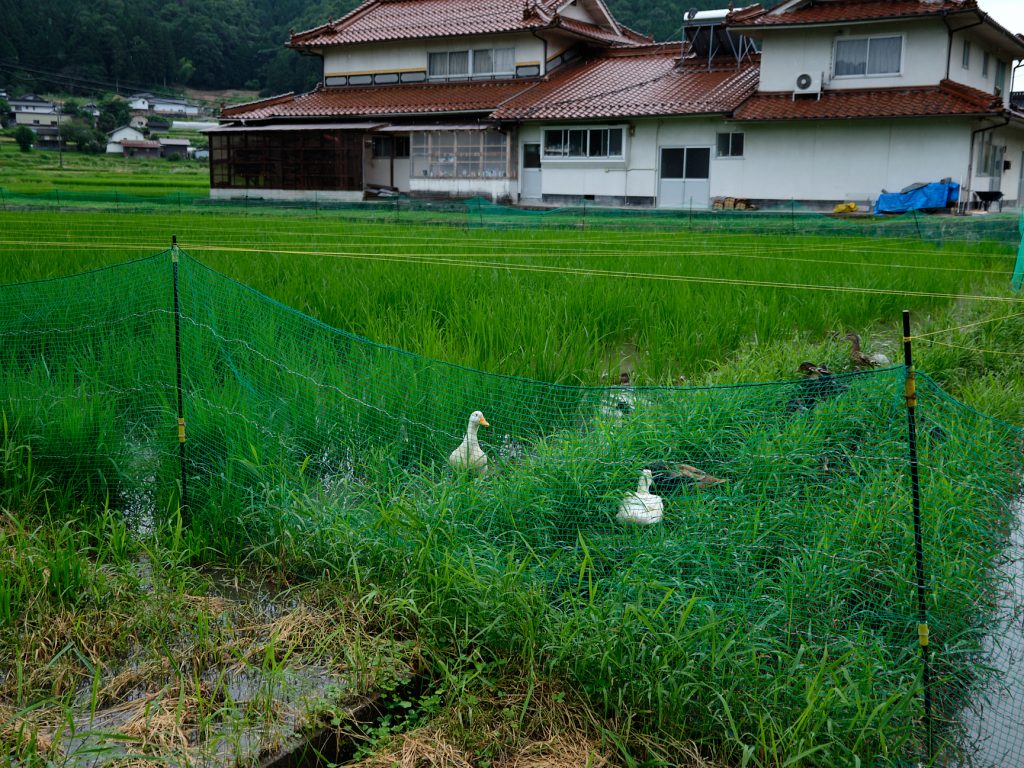Fine rice for making sake is found in famous brewery districts. Get to know shuzo-kotekimai (sake-brewing rice) made in Hiroshima.
2020.10.19

What distinguishes rice for eating from sakamai (sake-brewing rice)
Japanese sake is made from rice. Koshihikari is famous rice for eating, but sakamai( shuzo-kotekimai) is used for making sake.
Shuzo-totekimai is characterized with its large grain , low protein content and its large “shimpaku” (opaque white center of rice). Common shuzo-kotekimai is tall. So it tends to fall down easily and to be vulnerable to pests. That’s why it’s said that it’s difficult to plant shuzo-kotekimai.
Steamed rice for eating is sticky and delicious, and has a lot of protein and minerals.
On the other hand, sticky rice is not suitable for making sake because it doesn’t produce koji easily. And its high containment of protein, fat and minerals makes sake to be unfavorable. The characteristics of rice as food are not good for sake-making. So, the different kind of rice is used.
But it doesn’t mean all Japanese sake is made from shuzo-kotekimai. There are some rice brands that have been favorable other than shuzo-kotekimai, it’s called “shuzo-kotekimai.” “Kame-no-o” and “Gorki” are major examples.
Hiroshima as a major sake producer and also rice cropper
6.9% of rice planted area in Hiroshima is for growing shuzo-kotekimai. The major districts are Hiwa-cho Shobara-shi, Takamiya-cho Akitakata-shi, Miyoshi-shi, Miwa-cho, and Higashihiroshima-shi.
Hiroshima, known as one of “the big three” famous brewery, has been actively produced shuzo-kotekimai since old times. “Hattan” is one of long-time brands. It is labeled as a refined shimpakumai. Nowadays, “Hattan-nishiki” and “Hattan 35go” are grown as two representing varieties of Hiroshima sakamai.
Other varieties are; nationwide popular “Yamada-nishiki” and “Omachi”, furthermore “Senbon-nishiki” and “Koiomachi” originated in Hiroshima. Altogether, 6 varieties are grown in Hiroshima. 30% of shuzo-kotekimai of Hiroshima is shipped to other prefectures.
|
名称 ≫name |
特徴≫characteristics |
歴史≫history |
|
八反錦 Hattan-Nishiki |
It has full of aromas and elegant taste. It’s grown most only in Hiroshima as the designated variety. |
Adopted as Hiroshima’s encouraged variety in 1984. It is 10cm shorter than “Hattan 35go”, and doesn’t fall down easily. The number of bristles and the amount of yield improved. |
|
八反35号 Hattan 35 go |
Hattan-nishiki’s father. It inherits the genealogy of “Hattan”. It’s also called “Hiroshima Hattan”. |
Rooted in “Hattan-so” in late Edo period. Adopted as Hiroshima’s encouraged variety in 1962. The amount of yield is getting low because the acreage of Hattan-nishiki has widened. But it has longtime fans. |
|
こいおまち Koi-Omachi |
It makes rich and strong, full-bodied with a strong finish. A new variety of Hiroshima Omachi. |
Omachi varieties are difficult to grow because of their long stems and big shimpaku. Through selective breeding, short-stemmed “Koiomachi “was born. |
|
広島雄町 Hiroshima-Omachi |
A developed variety of “Omachi”. Only grown in Hiroshima. It’s also called, “Kairyo-Omachi” |
Originated in Okayama and moved to Hiba-gun, a north region of Hiroshima, and made it into “ Hiba-Omachi” which was developed into “ Hiroshima-Omachi” |
|
千本錦 Senbon-Nishiki |
Adopted to the soil and climate of Hiroshima. |
A hybrid of “ Yamada-nishiki “and “Nakate-shin-senbon “ . It inherits their merits. Its major production started in 2000 as a recommended variety. |
<other sakamai>
【Yamada-nishiki】Rice of Hyogo origin. Its big grain and proper sized shimpaku stabilize sake-making. So it’s popular and essential to make Ginjo. In Hiroshima prefecture, it’s produced at Zoga district in Higahihiroshima-shi.
【Omachi】Originated in Okayama. It’s very old sakamai found in 1859 in Edo period and still grown even now. It’s full-flavored and deeply popular. But it was about to become extinct in 40’s in Showa era because it easily falls down owing to its height and it’s vulnerable to pests. However, a brewery in Okayama revived this sakamai.
【Nakateshinsenbon】Also popular for eating. It’s a popular variety of Hiroshima rice.
【Kame-no-o】Found in Yamagata in 1893. It’s an ancestor of popular table rice such as Sasanishiki and Koshihikari. It’s ancient, and resistant to cold damage. It was very popular in Taisho era and revived in the late Showa era. It’s used by more than 40 breweries nationwide today.
The flavor of Japanese sake depends on each ingredient and the choice of shuzo-kotekimai.

